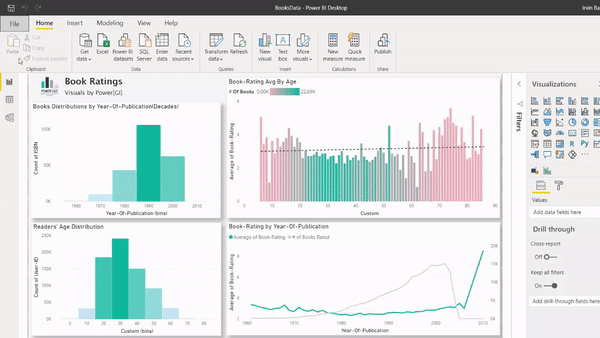“In a world in which the data is changing all the time, writing executives summaries is not very practical”
Arun Ulagaratchagan| Microsoft’s Corporate Vice President Intelligent Platform
It is clear that Microsoft is committed to automating as much manual tasks as possible, which is a really good vision but it may raise a couple of alarms to teams with traditional data analysis roles.
In an ordinary office, you’d typically have a business analyst looking at data and writing a summary up for a presentation on behalf of the business user. The difficulty level in preparing these executives summaries certainly depend on the size and nature of the business, they are usually not dynamic and any changes in the data may override some or many insights presented in them.
Microsoft’s solution to this problem is Smart Narratives, this new Power BI feature attempts to write those data summaries automatically, even though now is a preview feature and still far from perfect, it is an exiting approach that already provides good insights on the fly.
Preview feature
The Smart narrative visualization helps you quickly summarize visuals and reports by providing relevant out-of-the-box insights that are customizable.

Feature highlights
- Creates an insights summary of all visuals in the page

- Summarize a specific visual

- Edit the summary: Personalize the way the summary is displayed and add your own bits of text.
- Q&A functionality added to the summary: The use of natural language is also implemented in the visual, save time and avoid having to author the value formula.

- Adding dynamic values: the visual lets you add your own custom values to the summary, this gives a well needed flexibility by returning full control to the business analyst over the insights in display.
- Text and values formatting
- Summaries are dynamic and change when cross-filtering
- Create summaries on selected data points
We are very exited with this new feature and look forward for any adjustment that will surely come in the next few months.
But… Could these type of features replace some data analysis roles?
I wouldn’t say replace but it does transform the way we work, some job descriptions in the business intelligence field will surely continue to be updated or changed in the near future. The takeaway is that we must be prepared and embrace what’s coming and how everything is evolving.
Traditional BI teams should be adapting and looking forward to changes as well as continuously improving the way they work. Getting too attached with how we do certain tasks now, is a dangerous mind set.
There are no doubts that many of the data analysis manual tasks will sooner or later be replaced by a few more clicks.

